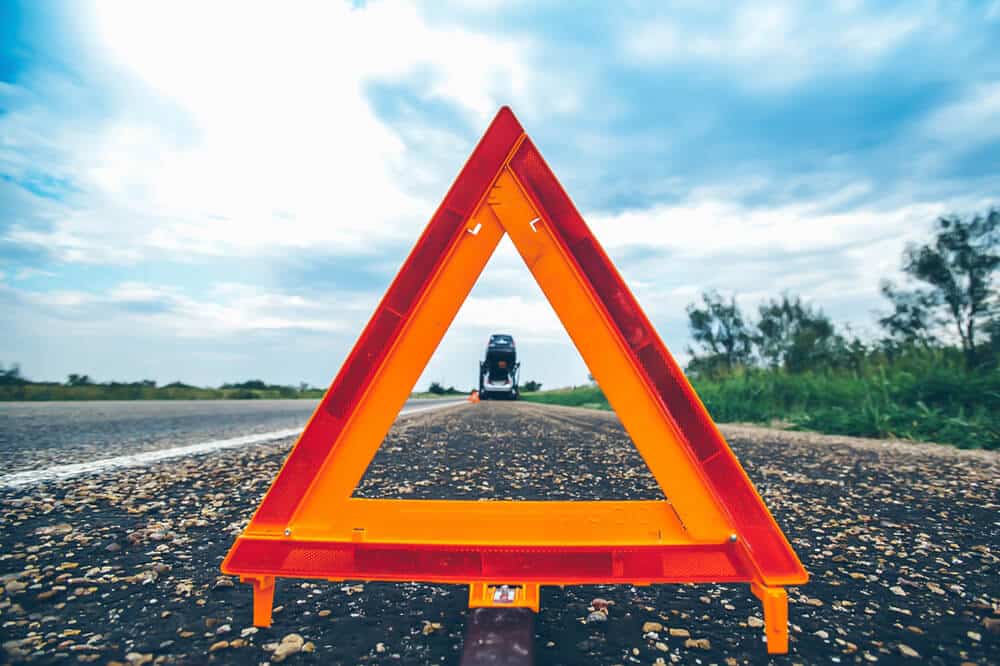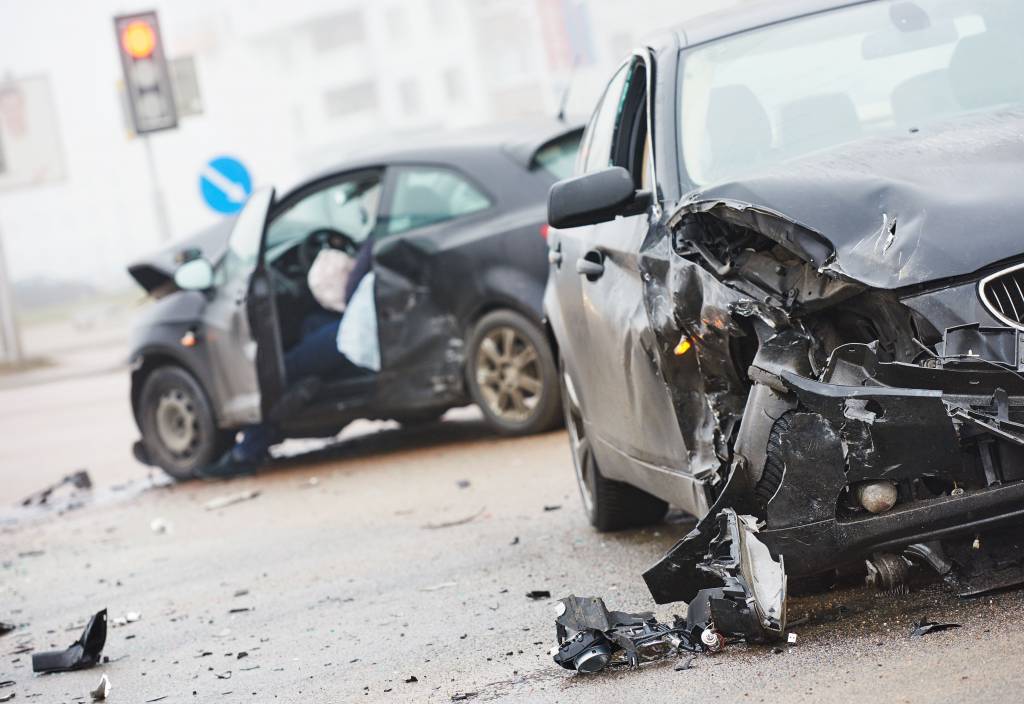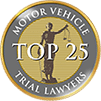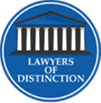Who is Responsible for a 3-Car Rear-End Collision?

If you were recently involved in a 3-car accident, you need to determine who is at fault, as the responsible driver is typically liable for property damage and any injuries.
If you’ve been injured in a multi-car accident in Atlanta, Spaulding Injury Law: Atlanta Personal Injury & Car Accident Lawyer can help. Read on to learn more.
What Are Multi-Car Accidents?
A multi-car accident happens when more than two vehicles are involved in a collision. It could be a 3-car accident, 4-car accident, or even more, but as long as it involves more than two vehicles, it’s considered a multi-car accident. The vehicles involved can be cars, trucks, or motorcycles, and any combination of these qualifies as a multi-car accident.
Common Multi-Vehicle Crash Scenarios
If you were involved in a three-car accident, it might have been caused by one of the following scenarios.
Rear-End Collisions in Multi-Car Accidents
Chain reaction accidents often result from one motorist rear-ending another. This impact can push a vehicle into the one in front of it, creating a domino effect. If the driver who initiated the crash was traveling at a high speed, the rear-end collision could cause damage to several vehicles.
Head-On Collisions Leading to Multiple Vehicle Pile-ups
Head-on collisions can block multiple lanes of traffic, making it difficult for drivers to react quickly enough to avoid a crash, especially in heavy traffic. This can result in multi-vehicle pile-ups that are dangerous and sometimes fatal.
T-Bone Collisions Causing Multi-Car Accidents
T-bone collisions frequently occur at intersections where crossing traffic poses a risk for accidents. Drivers must respond quickly to avoid a collision, and high speed in the striking vehicle can push the other vehicle into oncoming traffic, potentially resulting in a multi-car accident.
What Are the Most Common Causes of 3 Car Accidents?
Multi-car accidents can happen for almost any reason, but some of the most common causes of multiple-car accidents include:
- Excessive speed
- Tailgating
- Unsafe or improper lane changes
- Driver distractions
Below is a more detailed discussion of each of these factors.
Speeding
Speeding drivers increase the likelihood of accidents, and driving too fast can also impact the severity of injuries sustained in a crash. Motorists are responsible for driving safely according to the road conditions they encounter. When they fail to do so, they endanger themselves and others.
Tailgating
Tailgating happens when a driver follows another vehicle too closely. Often, tailgating drivers lack the time or space to slow down or stop safely, leading them to collide with the vehicle in front of them and potentially pushing that car into further danger.
Improper Lane Changes
Unsafe lane changes, such as those made without checking surrounding traffic or signaling, can create hazardous road conditions and increase the likelihood of multi-car accidents.
Distracted Driving
Distracted driving, particularly due to cell phone use, is increasingly common and often contributes to multiple car accidents. All drivers have a duty to drive safely and responsibly, and when multiple drivers are distracted, it creates a “perfect storm” for a three-car accident or even more.
Determining Fault in Multi-Car Rear-End Accidents
Rear-end accidents often lead to multi-car collisions as vehicles pile up behind one another, sometimes resulting in chain reaction accidents.
The First Car to Rear-End Another Is Usually at Fault
In a three-car accident, the first driver to rear-end another vehicle is typically considered responsible, as the rear vehicle generally has the most opportunity to avoid a crash. This is especially true if the rear vehicle collides with other drivers who have managed to stop safely.
Shared Liability in Chain Reaction Accidents
In some cases, multiple cars may be involved in rear-end collisions, and another driver may hit the cars already stopped, worsening the pile-up. In this situation, the original driver who caused the pile-up is likely responsible, but liability for the multi-car accident may also be shared with the distracted driver who caused additional damage.
Fault in Multi-Vehicle Accidents Involving Head-On Collisions
In some cases, a head-on collision can cause a three-car accident.
Liability usually depends on which car crosses into oncoming traffic. If a car drifts into oncoming traffic and causes a multiple-vehicle pile-up, that car’s driver is generally responsible for damages and injuries. However, if another vehicle side-swipes the car and forces it into oncoming traffic, the driver who caused the side-swipe may be at fault.
Who is At Fault in Multi-Car Accidents at Intersections?
Intersection accidents are often the result of improper left turns or drivers ignoring traffic signals or signage:
- Left Turn Intersection Accidents: A driver who attempts a left turn without waiting for crossing traffic to pass may cause a T-bone collision, potentially leading to a multi-vehicle accident. Liability depends on whether the turning driver had the right of way; if not, they are responsible for the crash.
- Ignoring Traffic Control Devices: A driver who runs a stop sign or red light is always at fault for a collision, although they may share responsibility if the accident involves cars that have already crashed.
Fault in Multi-Vehicle Accidents Resulting from Lane Changes
Improper lane changes can cause three-car accidents.
For example, if one driver drifts into another lane and causes a collision, they are likely responsible for the multi-car accident. In rare cases, other drivers may share responsibility, particularly if distracted driving is a factor.
Evidence to Determine Multi-Car Accident Liability
Multiple forms of evidence can be used to determine liability in multi-car accidents:
- Photos of the accident scene, such as skid marks, road hazards, or vehicle damage, can support other findings.
- Dash-cam or surveillance videos can help reconstruct the accident and identify responsible parties.
- Vehicle damage and paint transfer patterns can provide clues about how the accident unfolded.
- Witness statements can be valuable in determining fault.
- Electronic data recorder (EDR) data, or a truck’s black box, can offer crucial information about vehicle conditions and driver inputs.
- Police reports typically include essential details, such as date, time, location, and the officer’s determination of fault.
Contact a Georgia Personal Injury Attorney for Help
If you’ve been involved in a 3-car accident, the multi-vehicle accident attorneys at Spaulding Injury Law can help. With multiple responsible parties possible, our investigative resources can be invaluable in determining liability. Contact us today for a free consultation.

When you become our client at Spaulding Injury Law, you’ll be represented by a thoroughly experienced Atlanta personal injury attorney like Theodore A. Spaulding. For over 15 years, Mr. Spaulding has helped victims of negligence across the state of Georgia resolve personal injury cases, and he’s received a remarkable number of awards and honors from the legal community recognizing his commitment to clients and to the metro-Atlanta area.
Mr. Spaulding has been named one of the Top 100 trial lawyers in Georgia by the National Trial Lawyers for six successive years.
He is honored as a lifetime member of the Million Dollar Advocates Forum ® by the Top Trial Lawyers in America ®.
Charter Member of the Distinguished Justice Advocates.
Member of the Atlanta Bar Association.




















